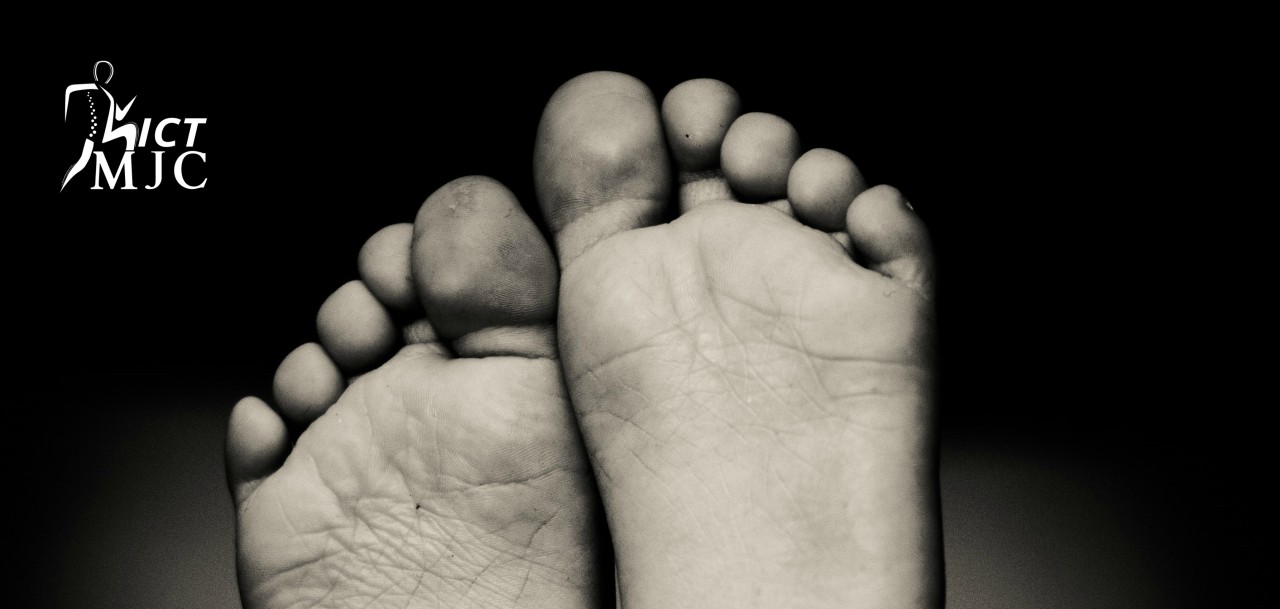Treating Plantar Fasciitis
Plantar Fasciitis is a common foot complaint we see here at ICT Muscle & Joint Clinic in Wichita, Kansas. The classical symptom associated with plantar fasciitis is pain that occurs with walking, after prolonged periods of non-weight bearing. If this describes you, than you very likely have a true case of plantar fasciitis.
To ultimately eliminate plantar fasciitis, there needs to be a strong muscle-brain connection, or awareness, of the foot. Improving how the foot moves can help reduce and/or eliminate your plantar fasciitis.
Scabbed Foot?
Plantar Fasciitis pain, as stated above, occurs with walking after prolonged periods of sleeping, sitting, or staying off the feet. The tissues local to the foot have become overused. As a result, the muscles and fascia on the bottom of the foot, pull on the heel bone creating trauma. During periods of rest, a scab forms deep underneath the skin. When you get up to walk and move, you break this scab open, creating pain. It is very similar to cutting a knuckle on your hand; every time you bend your knuckle, the scab breaks open. This process doesn’t allow the body to heal itself; constantly reproducing pain at the attachment, on the heel bone, of your bottom foot muscles.
From this, you would think giving the area time to rest would heal the injured tissues. However, this isn’t the whole case. Ultimately, how you control the foot while load bearing (i.e. walking) is the only way to truly eliminate plantar fasciitis pain.
Predictor of Plantar Fasciitis
Plantar Fasciitis occurs most extensively with very low-arched individuals. It used to be thought that arch height played a major role in plantar fasciitis pain. However, recent research indicates that the only real indicator, or predictor, for plantar fasciitis is the speed at which the foot pronates and the degree of toe dorsiflexion (bending upward) during motion. Often you can find these two indicators with excessively low arched individuals, but it is not the arch height itself that is the indicator.
Beginning PF Rehab
The most functional exercise known is walking. Being able to control how the foot creates stability while walking or running is vital to keeping the tissue quality, local to the foot, in optimal condition. Increased running speeds will always require more work for the intrinsic foot muscles due to the float phase of the body along with increased landing forces. There is also a hybrid version of running that we’ll save for another day. Here is an exercise that we often use for runners, and patients with plantar fasciitis.
These videos are a fantastic starting point for reducing and eliminating the mechanical problems, local to the foot, of plantar fasciitis. Make sure not to progress from one to the next too quickly. Being able to create a solid base consistently is far more beneficial then getting to the end of the exercise sooner.
About the author
Dr. Keith Sparks is an award-winning chiropractor, functional medicine expert, and the co-founder of ICT Muscle & Joint Clinic. Dr. Sparks’ emphasis of care originated within the fields of rehabilitation, soft-tissue therapies, and chiropractic. To date, he has brought this unique combination of skills into union with functional medicine. The sole purpose of intertwining these distinct skills, knowledge, and services is to provide incomparable care to his local community. Dr. Keith Sparks is often seen in the Wichita, KS community speaking at business events and teaching health and performance classes.
